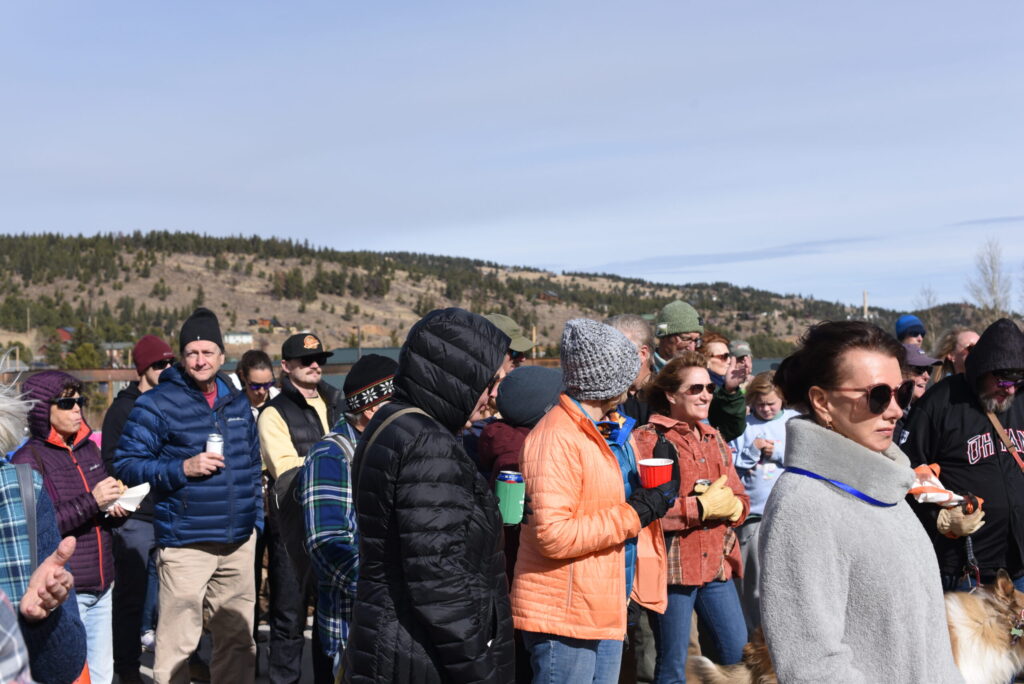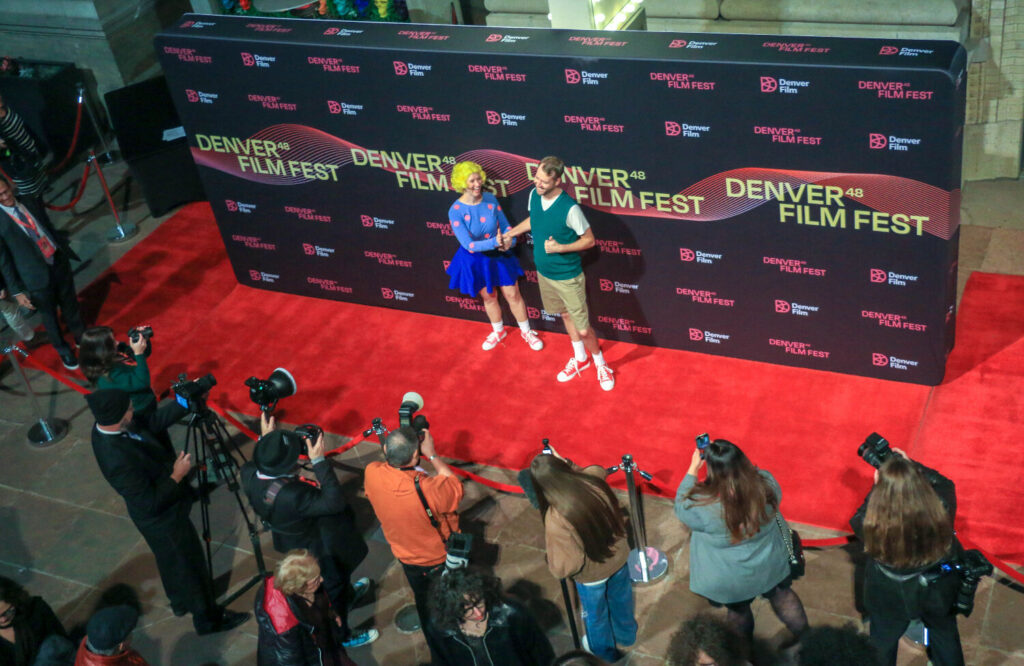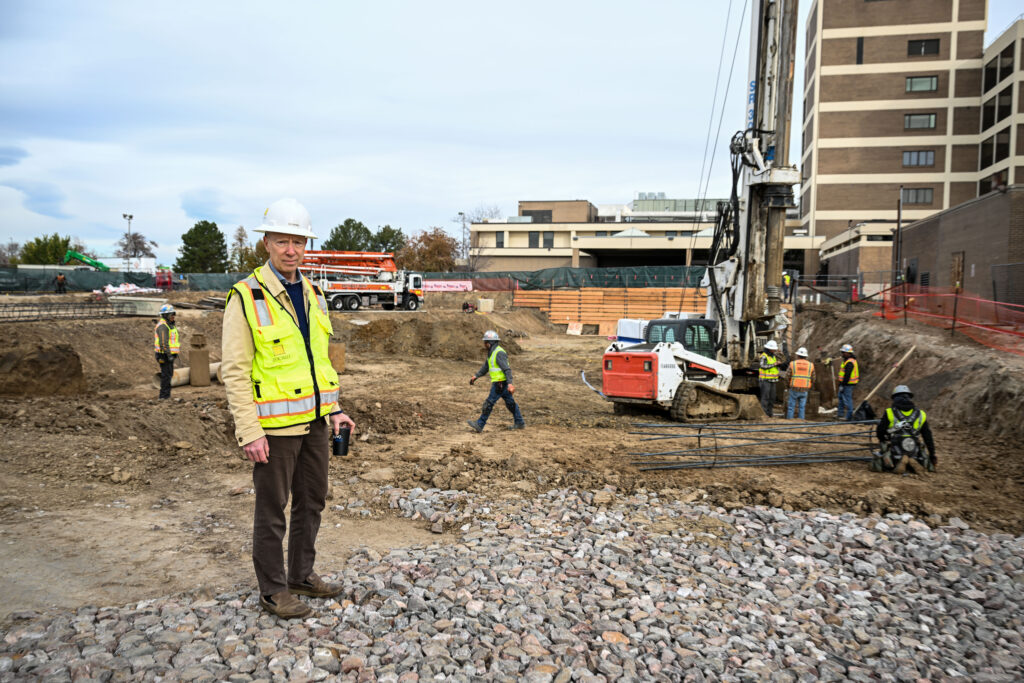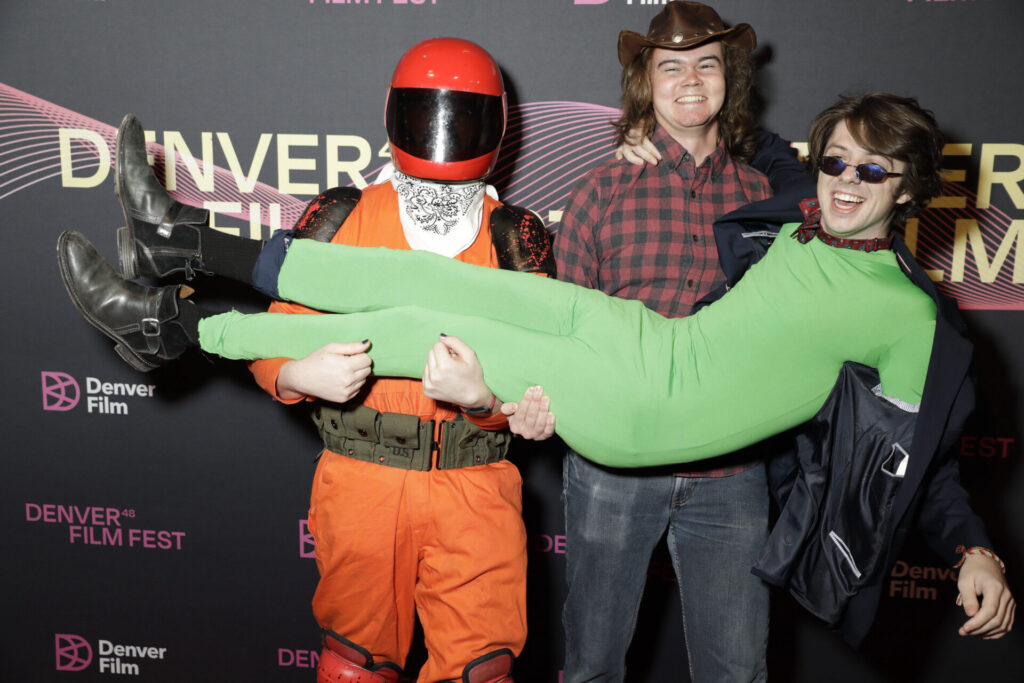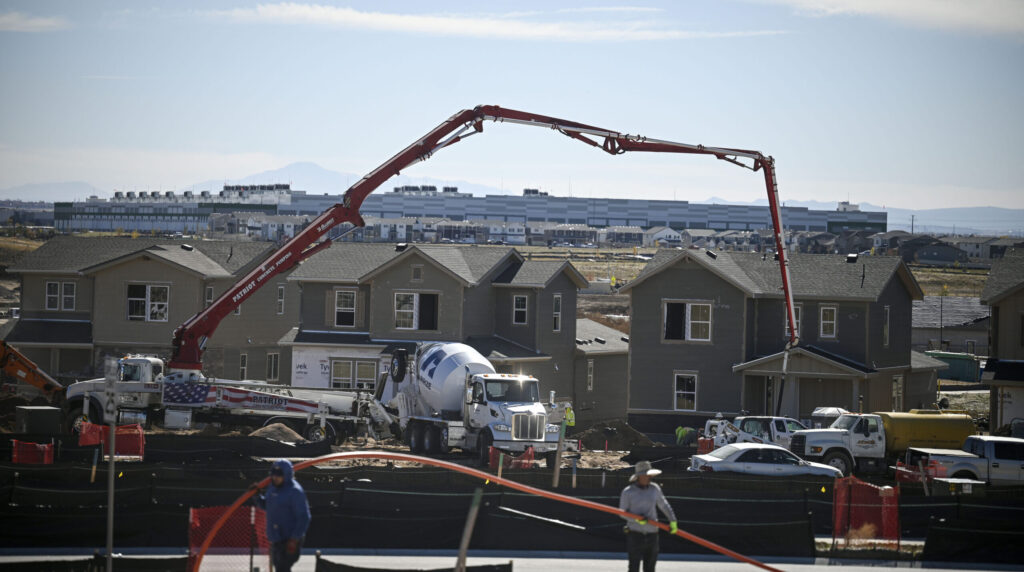Denver celebrates full reopening of 16th Street
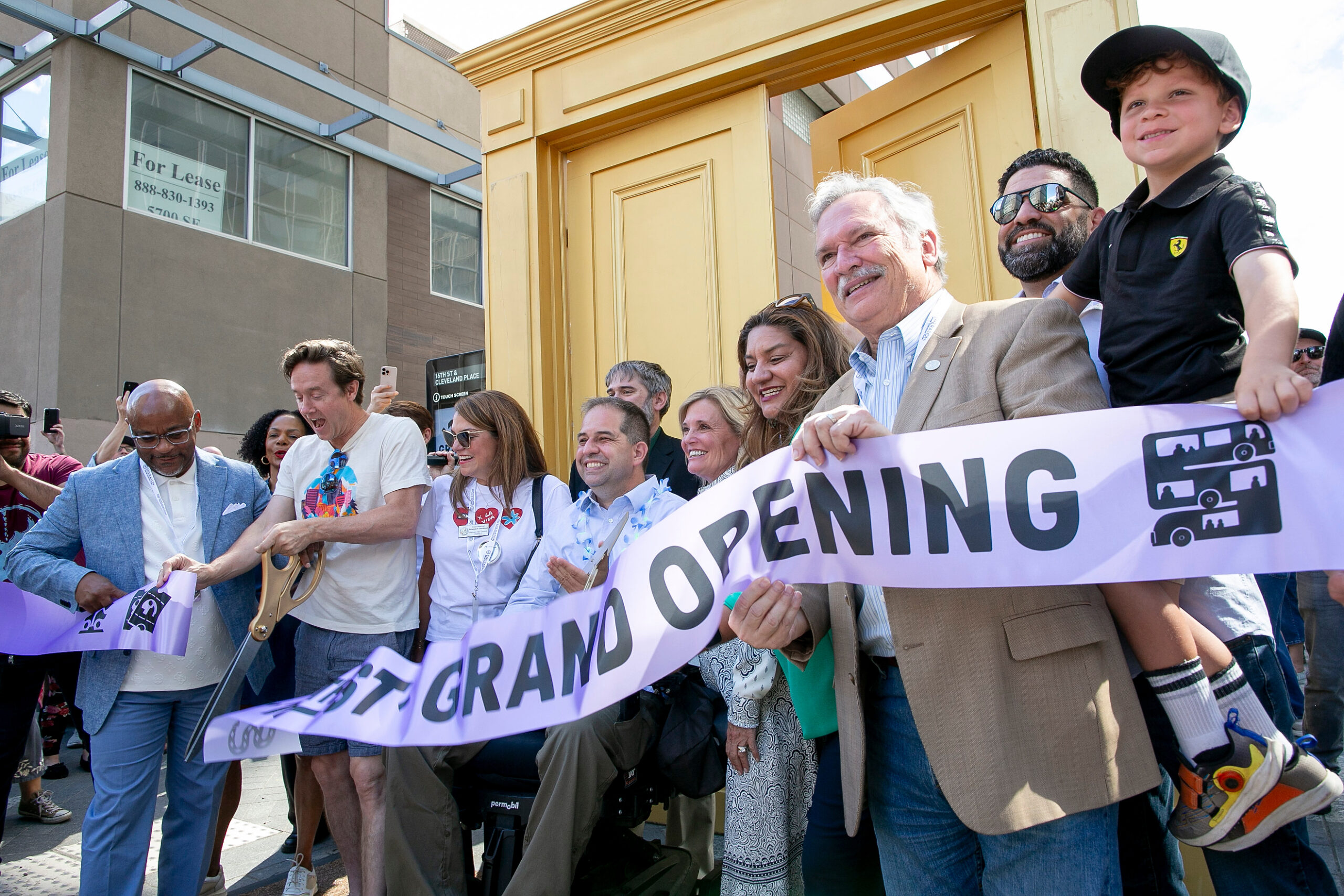
After Mayor Mike Johnston exited the elevator onto the second level of the downtown Daniels & Fisher Tower just after 2 p.m. Saturday, he took a moment to walk over to the window and gaze at the plaza below.
Dressed in a white t-shirt and khaki pants, Johnston surveyed the landscape before him: a fully-reconstructed walkway, lined with trees and filled with people enjoying the early October sun. A few minutes later, he would stand on the historic clocktower’s balcony and deliver a proclamation a decade in the making.
“16th Street’s role as an economic cornerstone will generate employment, attract investment and strengthen Denver’s position as an economic hub of the mountain west,” Johnston read to the crowd. “(It) represents our commitment to creating accessible, walkable public spaces that promote transportation, honors our stories and traditions and fosters community and connectivity.”
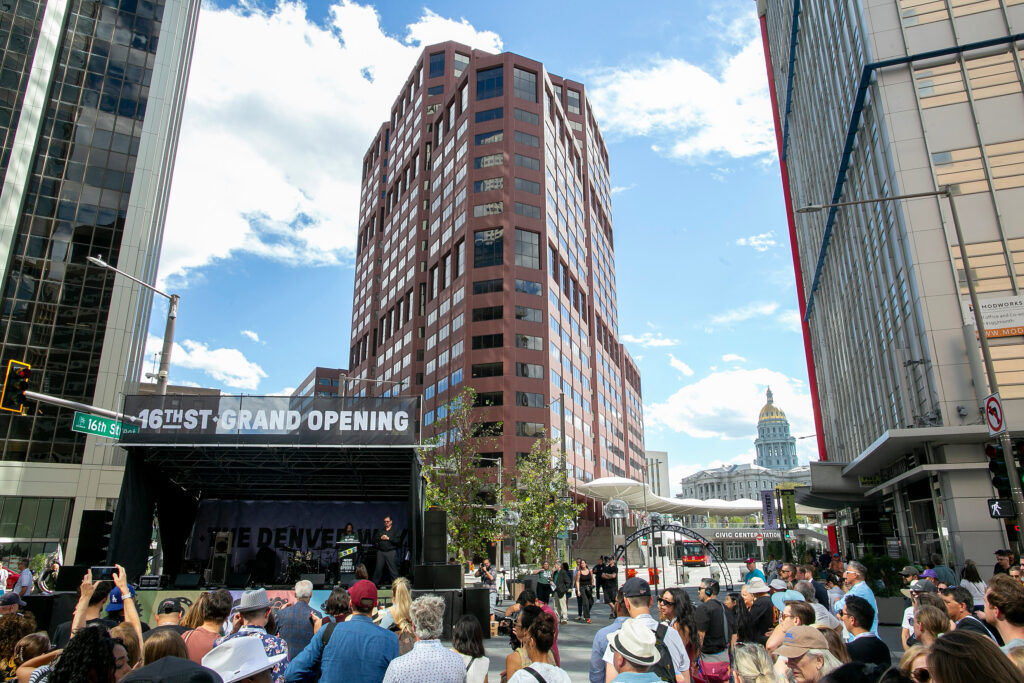
The pedestrian promenade, free from the sights of hard-hat-clad construction workers and the sounds of reversing front loaders that had dominated its atmosphere for years, hosted a celebration as it finally fully reopened on Saturday, the same date that the original 16th Street Mall opened in 1982.
A $175 million project that took a decade to plan and implement, 16th Street’s celebration began with a marching band walking the street’s near-1.2-mile length before ending at the main stage located at the roadway’s intersection with Cleveland Place.
As the band marched down the street, it passed multiple groups of city employees on ladders, hanging up the new signs for 16th Street.

On the stage, Johnston and several others affiliated with the project — including Regional Transportation District Debra Johnson and former Mayor Michael Hancock, who began the project during his tenure — gave speeches commemorating the significance of the project before participating in a ceremonial ribbon cutting ceremony.
Organized by the Downtown Denver Partnership, the event included scavenger hunts, musical and dance performances and $16 deals at several businesses along and just off the roadway.
Consisting of nearly one million pavers and over 200 new trees, the roadway was one of the more technically-challenging projects ever undertaken by landscape architecture firm Dig Studio, said Co-founder and Principal Bill Vitek.
One reason why, Vitek said, was that, with the desire to create a better leafy canopy for pedestrians, the firm planted the trees in a soil cell system, which allows for roots, and therefore the trees, to grow bigger than they would in a normal five-by-five hole.
Another reason, he said, was the way they made the walkway more resistant to Colorado’s drastic freeze/thaw cycles.
“What didn’t exist in the original design but does now is a subsurface draining system,” Vitek said. “That way, the water is evacuated … the technical detailing to make that work from a paving standpoint and interfaced with the soil cells is what made it so challenging.”
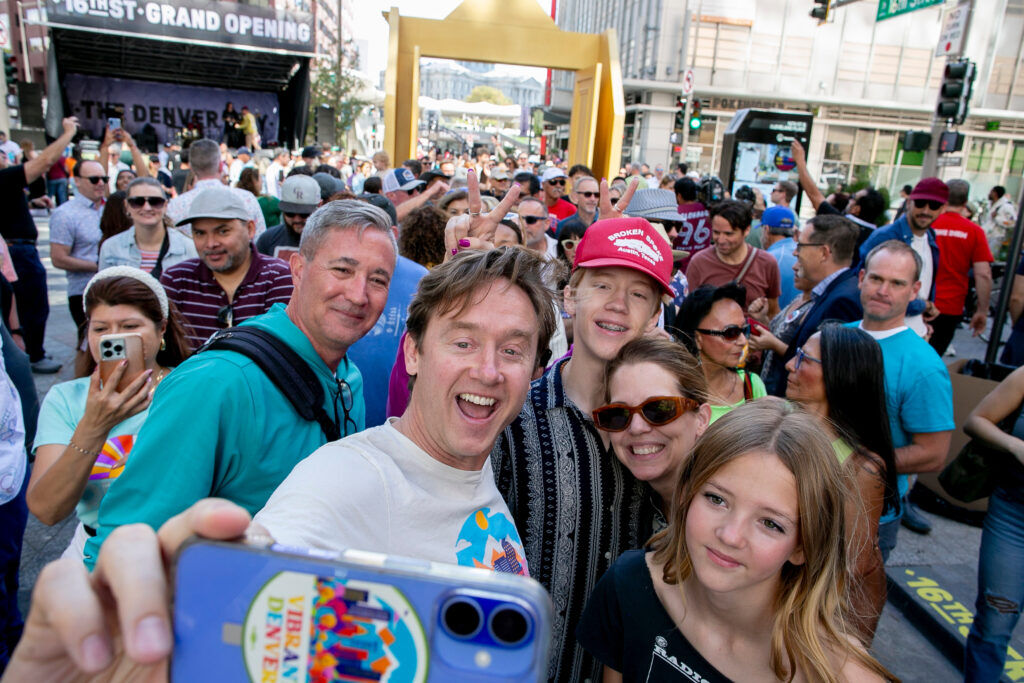
Some noted the celebration marked a great moment for a part of the city where businesses had been struggling as construction contiuned outside their door.
“Whenever you take on projects like this, you know it’s going to be a tough period,” said Steve Smithers, who was watching a musical performance with his wife, Renee. “This was a big project, so it’s great to see for the businesses that it’s open again.”






